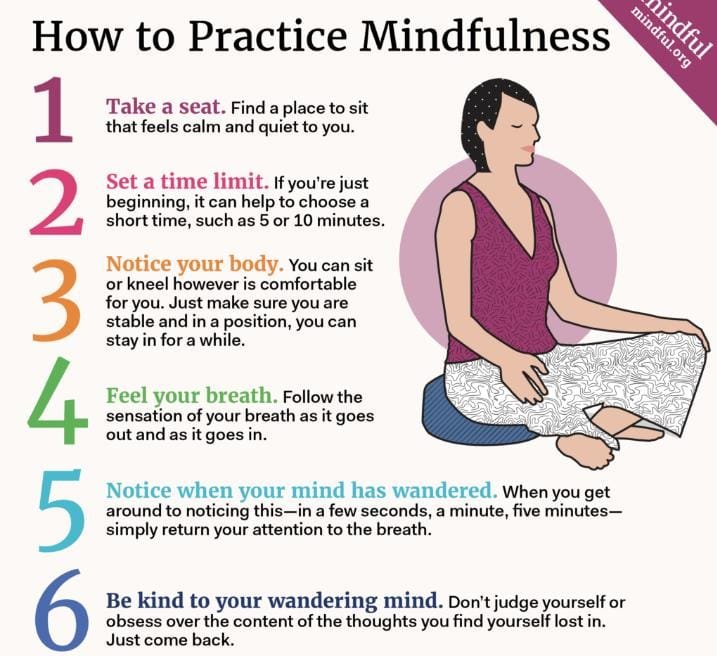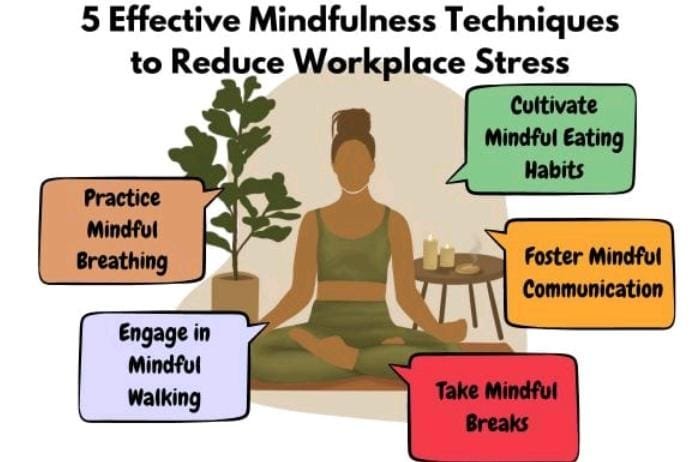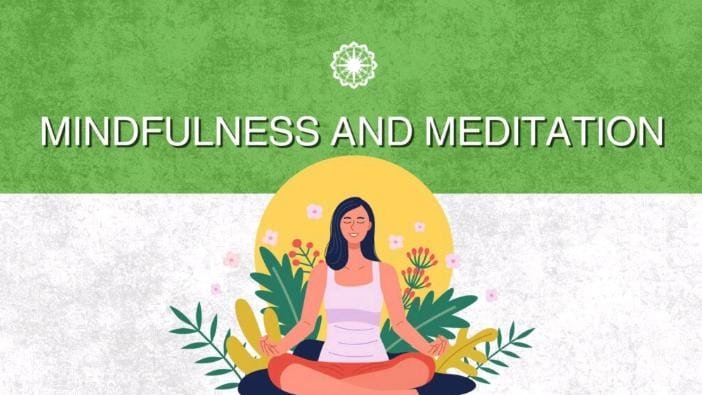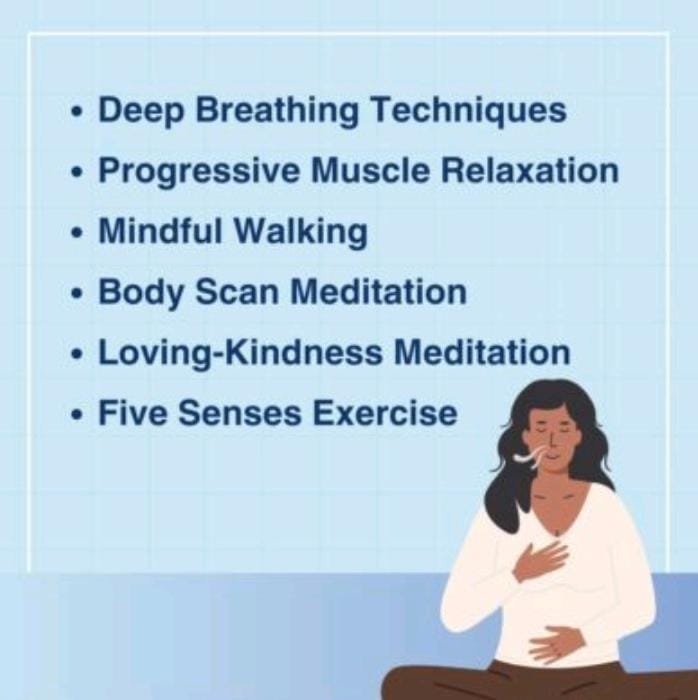
Mindfulness Meditation Techniques
Mindfulness Meditation
Stress has become a part of everyday life for most people. Whether it’s due to work, personal challenges, or simply the fast pace of modern living, we all experience moments of overwhelm. While stress is natural, too much of it can harm your health, productivity, and emotional well-being. This is where mindfulness meditation techniques for stress relief come into play.
Mindfulness meditation is not about escaping your problems—it’s about learning to be present, calm, and centered even in challenging times. In this article, we’ll explore how mindfulness works, practical techniques you can try, and tips to make meditation part of your daily routine.
What is Mindfulness Meditation?

Mindfulness meditation is a practice of bringing your attention to the present moment. It involves observing your thoughts, feelings, and bodily sensations without judgment. Instead of worrying about the future or regretting the past, mindfulness helps you focus on now.
Research has shown that practicing mindfulness regularly can reduce stress, improve emotional regulation, and even boost overall health. It allows your mind to slow down, your breathing to deepen, and your body to relax naturally.
Why Mindfulness is Effective for Stress Relief

Stress often comes from overthinking, multitasking, or being caught in negative thought patterns. By practicing mindfulness, you train your brain to pause, breathe, and respond calmly instead of reacting impulsively.
Some key benefits include:
- Reduced anxiety: Mindfulness lowers the intensity of racing thoughts.
- Improved focus: It helps clear mental clutter and boosts concentration.
- Better sleep: Relaxation techniques prepare your body for deeper rest.
- Emotional balance: You gain resilience to handle challenges more calmly.
Simple Mindfulness Meditation Techniques for Stress Relief

You don’t need a special place, equipment, or long hours to begin mindfulness. A few minutes a day can make a big difference. Here are effective techniques you can start with:
1. Deep Breathing Meditation
One of the simplest and most powerful methods.
- Sit comfortably and close your eyes.
- Take a slow breath in through your nose, hold it for a moment, and exhale gently.
- Focus only on the rhythm of your breath.
- If your mind wanders, gently bring it back to breathing.
This technique signals your nervous system to relax and reduces stress almost instantly.
2. Body Scan Meditatio
This practice connects you with your body and releases physical tension.
- Lie down or sit comfortably.
- Starting from your toes, notice how each part of your body feels.
- Slowly move upward to your legs, stomach, chest, arms, and head.
- If you find tension, breathe deeply into that area and imagine it softening.
3. Guided Mindfulness Meditation
Sometimes, listening to a calming voice makes it easier. You can use apps or YouTube sessions that guide you through relaxation. These sessions often include visualizations like imagining a peaceful forest or beach, which helps distract the mind from stress triggers.
4. Mindful Walking
If sitting still is difficult, try mindful walking.
- Walk slowly and pay attention to each step.
- Notice how your feet touch the ground, how your arms swing, and how the air feels.
- Stay present instead of letting your mind wander to worries.
This is perfect for people who enjoy movement over stillness.
5. Loving-Kindness Meditation (Metta)
This method focuses on compassion and positivity.
- Sit quietly and repeat phrases like: “May I be calm. May I be healthy. May I be happy.”
- Then extend these wishes to others—family, friends, even strangers.
- This shifts your mindset from stress to kindness and peace.
6. Five Senses Grounding Technique
This is a quick mindfulness exercise you can do anywhere:
- Notice 5 things you can see.
- Notice 4 things you can touch.
- Notice 3 things you can hear.
- Notice 2 things you can smell.
- Notice 1 thing you can taste.
It instantly brings you back to the present moment, cutting off stressful thoughts.
Tips for Making Mindfulness a Habit

- Start small: Begin with 5 minutes a day and gradually increase.
- Be consistent: Practice at the same time daily to build routine.
- Stay patient: It’s normal for your mind to wander. Don’t judge yourself.
- Use reminders: Set an alarm or place sticky notes to remind you to pause and breathe.
- Combine with daily activities: Try mindful eating, mindful showering, or mindful listening to music.
How Mindfulness Meditation Improves Your Lifestyle
Practicing mindfulness isn’t just about stress relief—it transforms your overall lifestyle. Many people notice improved relationships, sharper decision-making, and more joy in simple moments. Over time, mindfulness meditation can reduce chronic stress, lower blood pressure, and improve heart health.
Conclusion
Stress is unavoidable, but suffering from it constantly is not. By practicing mindfulness meditation techniques for stress relief, you can train your mind and body to respond to challenges more calmly. Whether it’s deep breathing, body scans, mindful walking, or guided meditation, these techniques offer practical tools to live a balanced life.
Start with just a few minutes each day, and you’ll notice how mindfulness shifts your perspective, bringing more peace, clarity, and resilience into your daily life.
